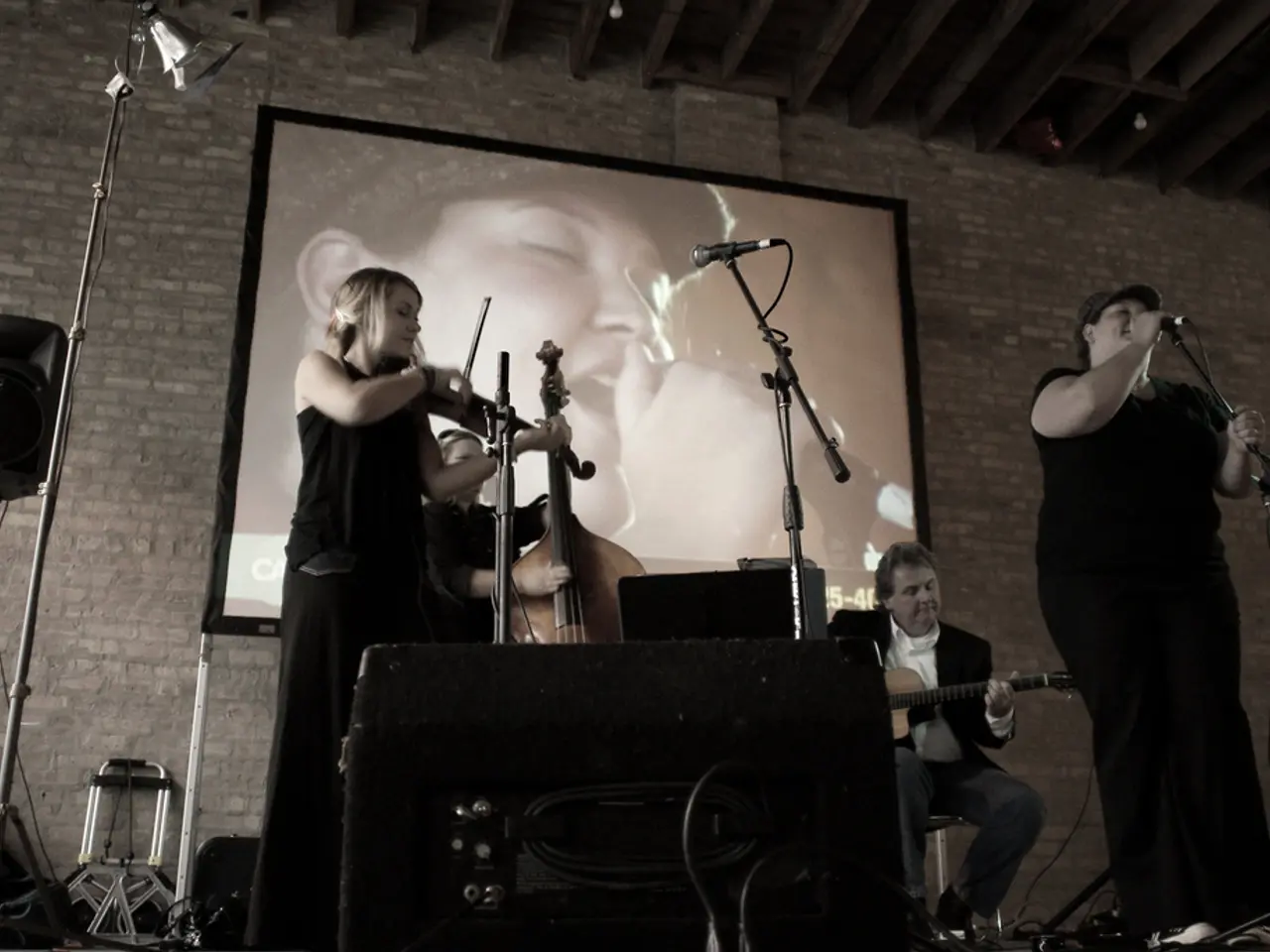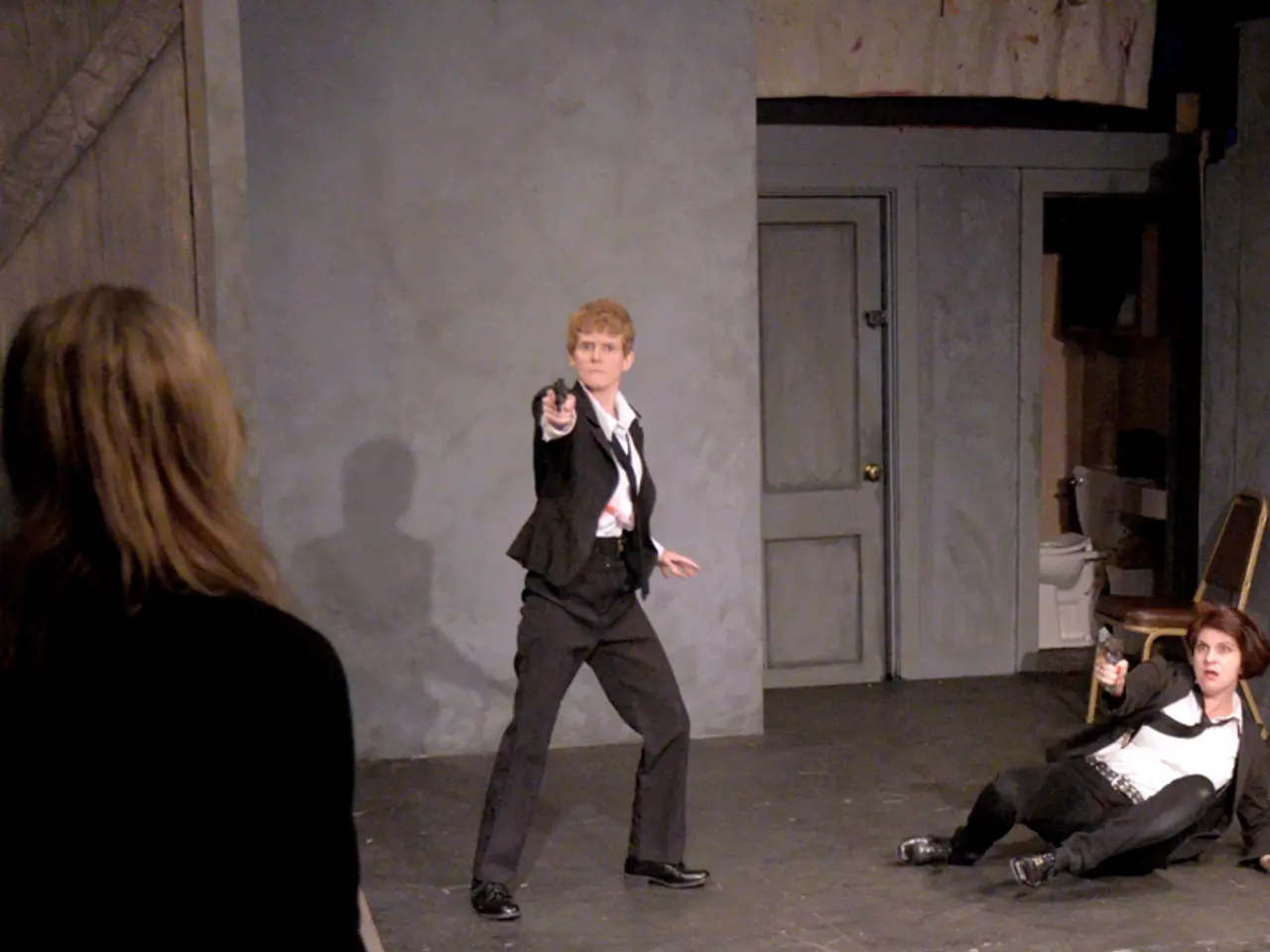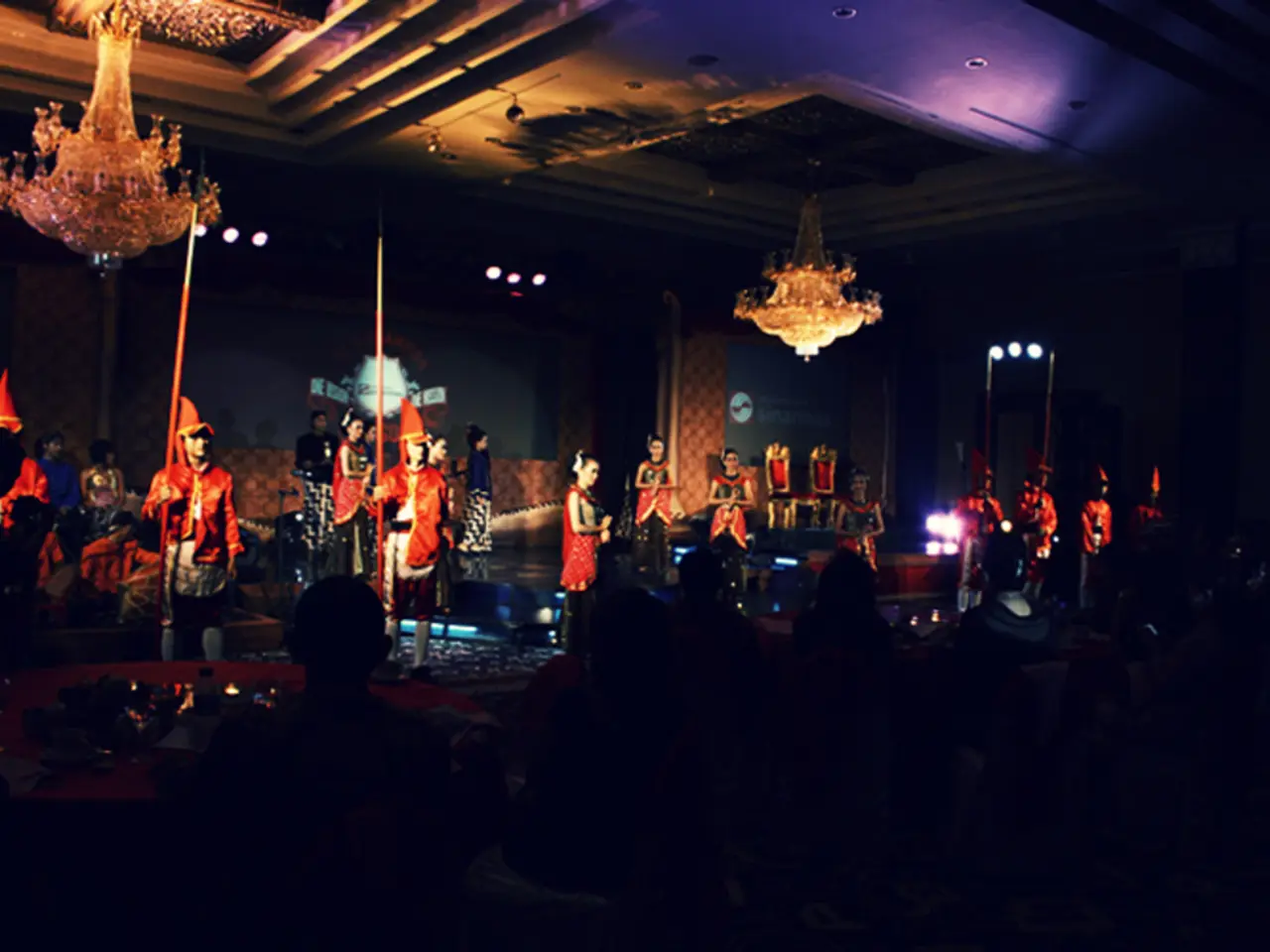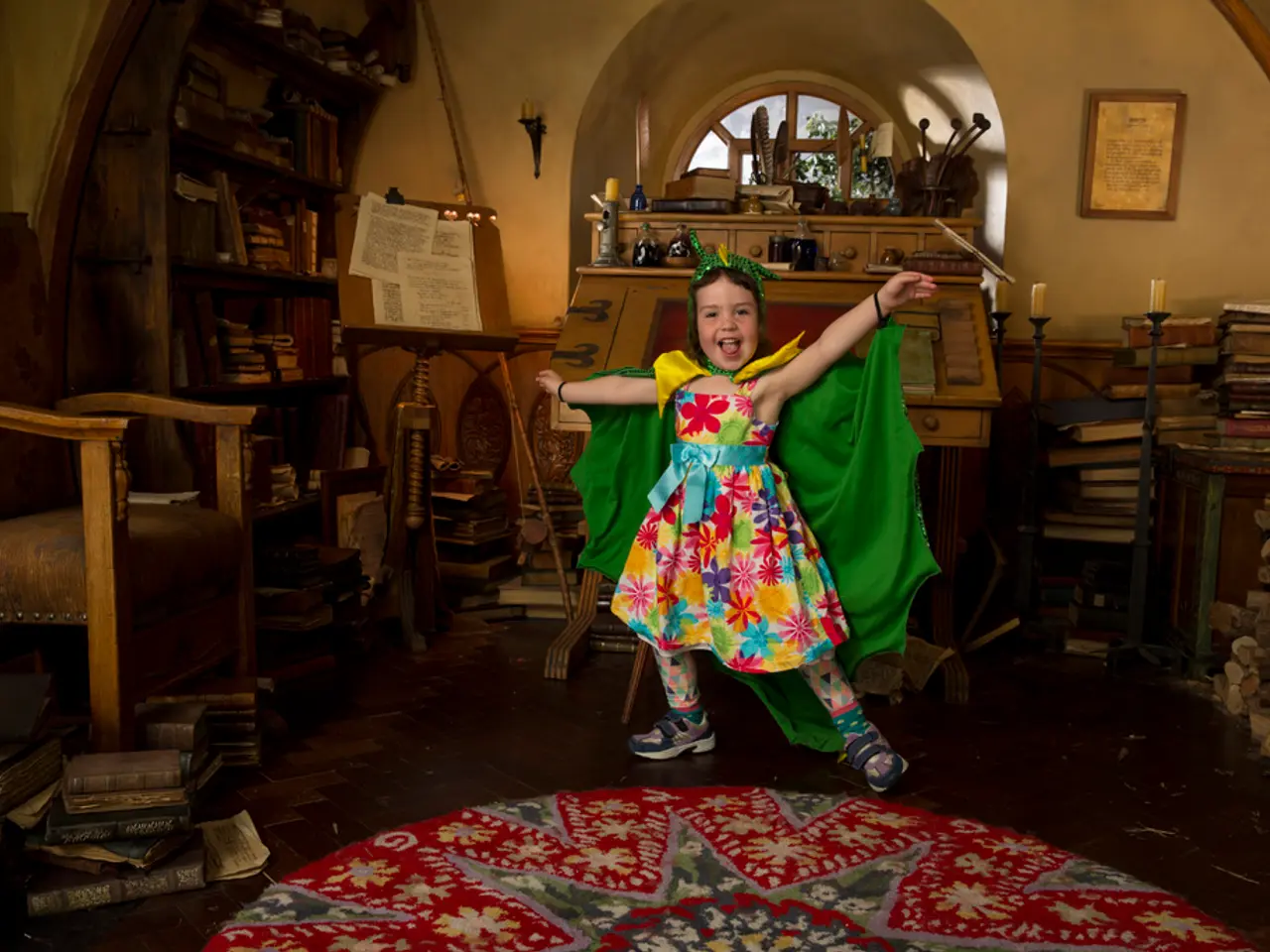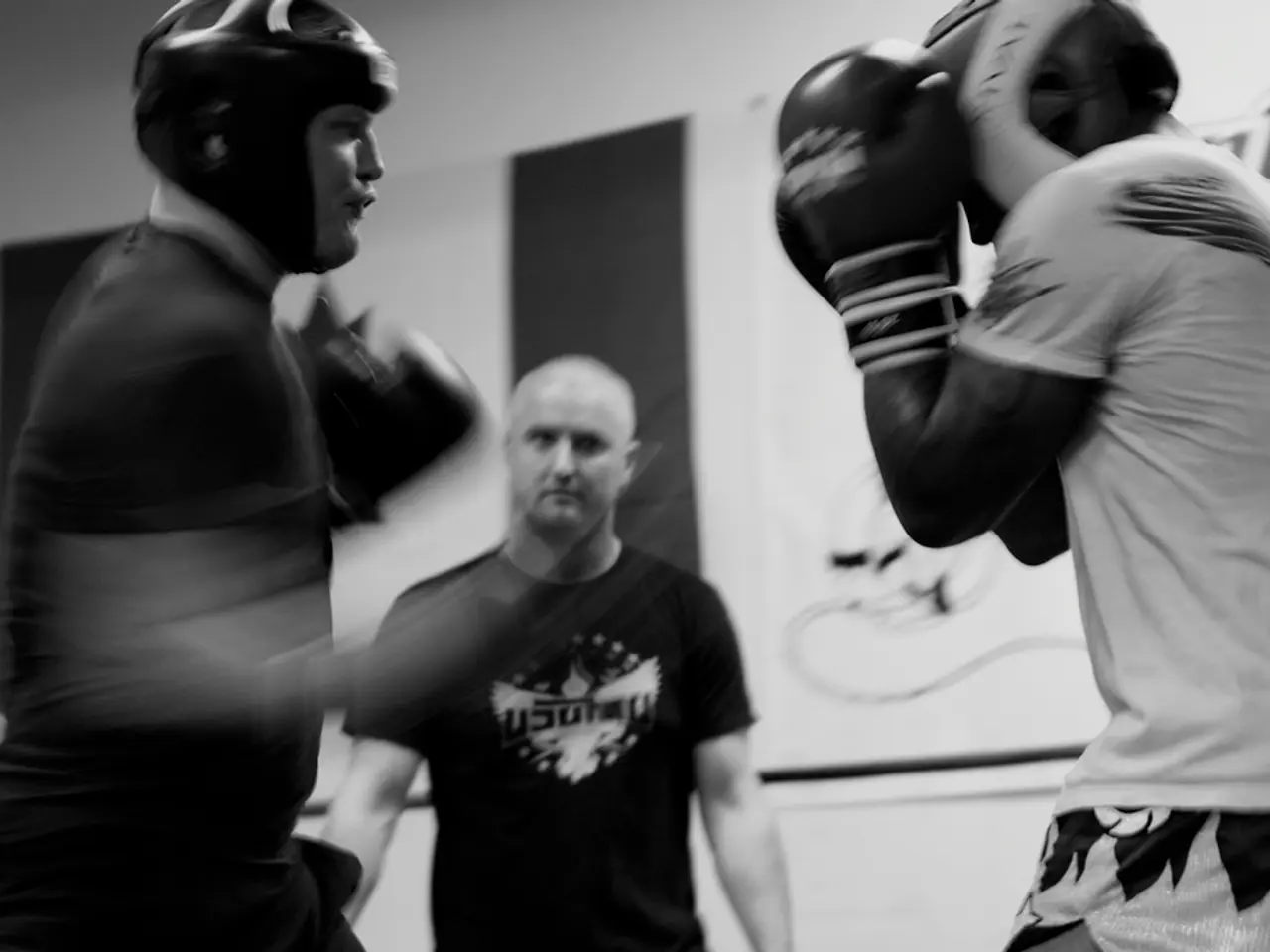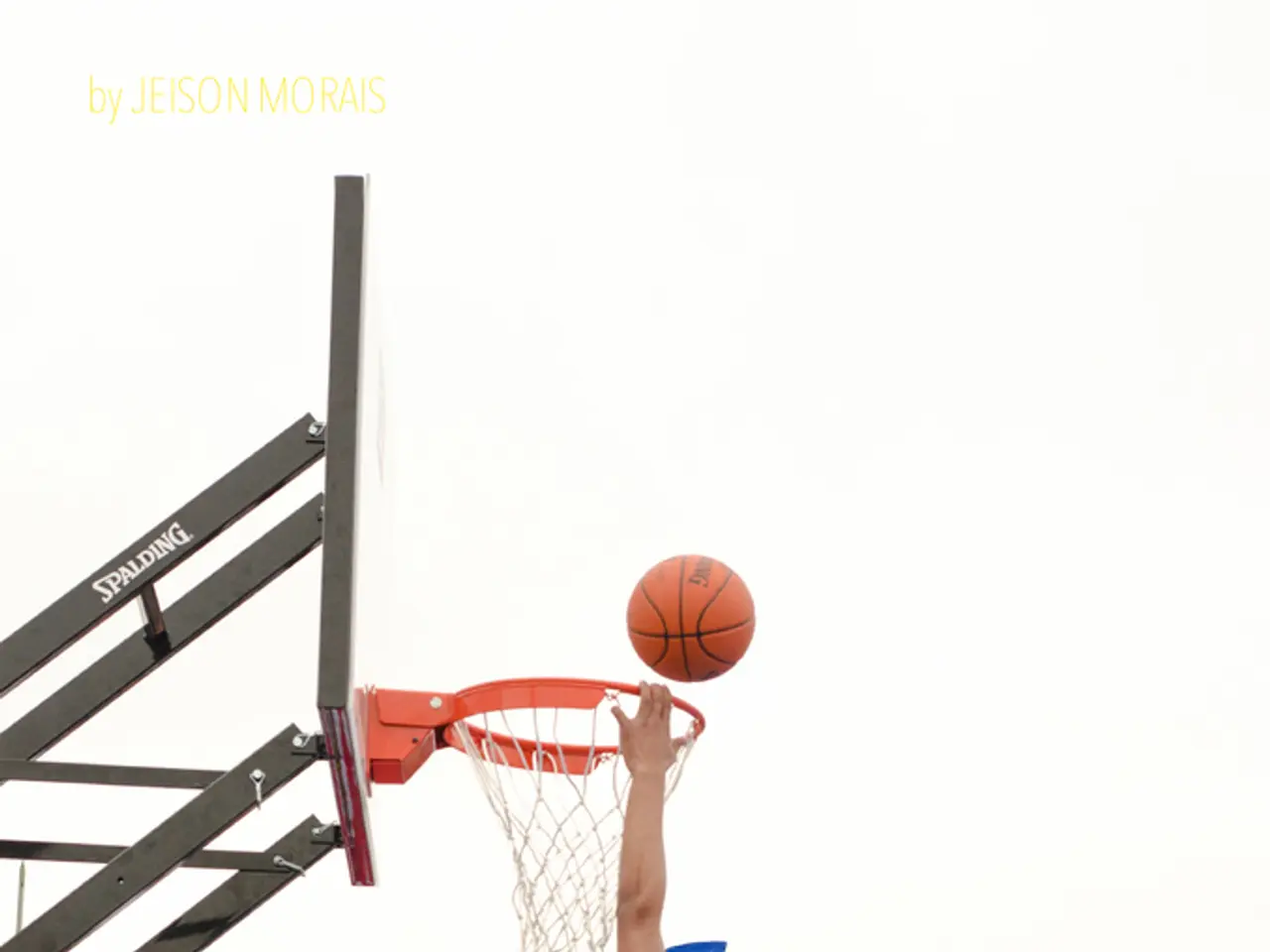Audience in Regensburg was entertained by a trio performing Bavarian madrigals
In the heart of the Minorite Church, a unique concert took place, showcasing the enchanting sounds of Bavarian Madrigals. This performance, led by the renowned zither virtuoso Gertrud Wittkowsky, brought together a group of talented musicians from the Upper Palatinate region.
The concert featured Italian madrigals, a form of vocal music composition from the Renaissance and early Baroque periods, that were not in Latin but in the vernacular—Italian in this context. The madrigals performed were multi-voiced vocal pieces, offering a rich and harmonious soundscape.
Gertrud Wittkowsky's zither served as the general bass instrument, lending a unique and captivating tone to the performance. Her large zither, which she constructed herself, added a distinctive flavour to the arrangements of guitar music, a capriccio by the Bach contemporary Silvius Leopold Weiss, and a piece by Kapsberger.
In addition to her zither skills, Gertrud Wittkowsky demonstrated her wonderful alto voice, enabling three-part singing in the performance. The soloist, Katja Stuber, a soloist at the Salzburg and Bayreuth festivals, sang with many shades and color values, adding depth and emotion to the performance.
The madrigals performed ranged from the introductory madrigal by Matthias Greitter from 1540 to highly virtuosic arias by Barbara Strozzi. The concert also included Venetian madrigals, showcasing the evolution of this art form over the centuries.
While the connection between Bavarian Madrigals and Felix Hoerburger's dialect is not explicitly documented, Hoerburger, a Regensburg poet, wordsmith, and ethnologist, has created a dialect called 'Schnebierl-Bavarian' for painting soundscapes of a Bavarian landscape and exploring new world dimensions through sounds. Four Gstanzln by Christiane Oettl based on texts by Hoerburger were tailored to the ensemble to expand the classical repertoire.
For those seeking more detailed information on Bavarian Madrigals or Felix Hoerburger’s specific role, consulting specialized musicological resources or Bavarian cultural archives would be advisable. However, this concert provided a tantalizing glimpse into the world of Bavarian Madrigals, a captivating concert experience that led in all directions of music.
The concert, expanding its repertoire, incorporated four Gstanzln by Christiane Oettl, based on texts by Felix Hoerburger, blending Bavarian Madrigals with Hoerburger's dialect, creating a unique fusion of music and language. Katja Stuber, joining forces with Gertrud Wittkowsky, offered a taste of entertainment that transcended the boundaries of traditional Italian Madrigals, showcasing the versatility of both music and vocality.
